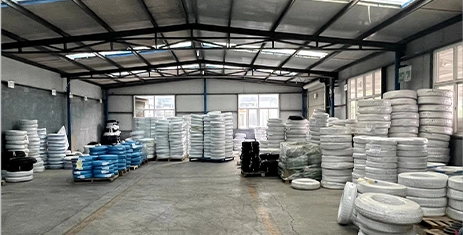Understanding Mercruiser Power Steering Hose Fitting Types and Installation Tips for Your Boat
Understanding Mercruiser Power Steering Hose Fittings
When it comes to boating, ensuring the safety and efficiency of your vessel's systems is paramount. One critical component of many boats equipped with Mercruiser engines is the power steering system, which enhances maneuverability and steering control. At the heart of this system is the power steering hose fitting, a small yet vital piece that plays a significant role in maintaining optimal performance.
The Importance of Power Steering
Power steering in boats is essential for reducing the effort required to steer, particularly at low speeds or when docking. This is especially crucial for larger vessels where manual steering can become cumbersome and fatigue-inducing. The Mercruiser power steering system utilizes hydraulic fluid to amplify the driver’s input, allowing for smoother and more responsive steering.
Understanding Hose Fittings
Power steering hose fittings are the connectors that join hoses to the power steering pump and the steering gear. These fittings are designed to withstand high pressures and are made from durable materials, typically metal or reinforced plastics. The integrity of these fittings is crucial; even a small leak can lead to a significant loss of hydraulic fluid, resulting in diminished steering effectiveness and potential damage to the system.
Types of Fittings
Mercruiser power steering hose fittings come in various designs and configurations to suit different engine models and applications. The most common types include
1. Straight Fittings These are simple connectors that allow hoses to attach in a straight line. They are often used in setups where space is not a constraint.
mercruiser power steering hose fitting

2. Elbow Fittings Designed to redirect the flow of fluid at a 90-degree angle, elbow fittings are useful in tighter spaces where the hose cannot run in a straight line.
3. Swivel Fittings These fittings allow for rotational movement, making them ideal for applications where hoses need to be positioned at varying angles without kinking or twisting.
Maintenance and Replacement
Regular inspection of power steering hose fittings is crucial for maintaining the health of the power steering system. Over time, fittings can corrode or become loose, which may lead to leaks. Boaters should look for signs of wear such as rust, cracks, or fluid stains around the fittings.
If a fitting is damaged or worn out, it is essential to replace it promptly. Using the correct Mercruiser part is critical; incorrect fittings can lead to improper hydraulic flow and may not withstand the operating pressures of the system. Always consult the Mercruiser service manual for specifications tailored to your engine model.
Installation Tips
When installing new power steering hose fittings, it is essential to ensure that all components are clean and free from debris. A proper seal is crucial, so using the right amount of torque is important to avoid both leaks and damage to the fitting. For threaded fittings, applying thread sealant can help provide a tighter seal, preventing leaks.
Conclusion
In summary, Mercruiser power steering hose fittings are fundamental components that significantly impact the efficiency and safety of your boat's steering system. By understanding their importance, types, and maintenance needs, boat owners can ensure a smoothly running power steering system that enhances their boating experience. Regular inspections, timely replacements, and correct installation practices will help you enjoy safe and responsive steering for years to come. Always prioritize quality parts and refer to professional guidance when needed to keep your vessel in top condition.
-
Ultimate Spiral Protection for Hoses & CablesNewsJun.26,2025
-
The Ultimate Quick-Connect Solutions for Every NeedNewsJun.26,2025
-
SAE J1401 Brake Hose: Reliable Choice for Safe BrakingNewsJun.26,2025
-
Reliable J2064 A/C Hoses for Real-World Cooling NeedsNewsJun.26,2025
-
Heavy-Duty Sewer Jetting Hoses Built to LastNewsJun.26,2025
-
Fix Power Steering Tube Leaks Fast – Durable & Affordable SolutionNewsJun.26,2025

